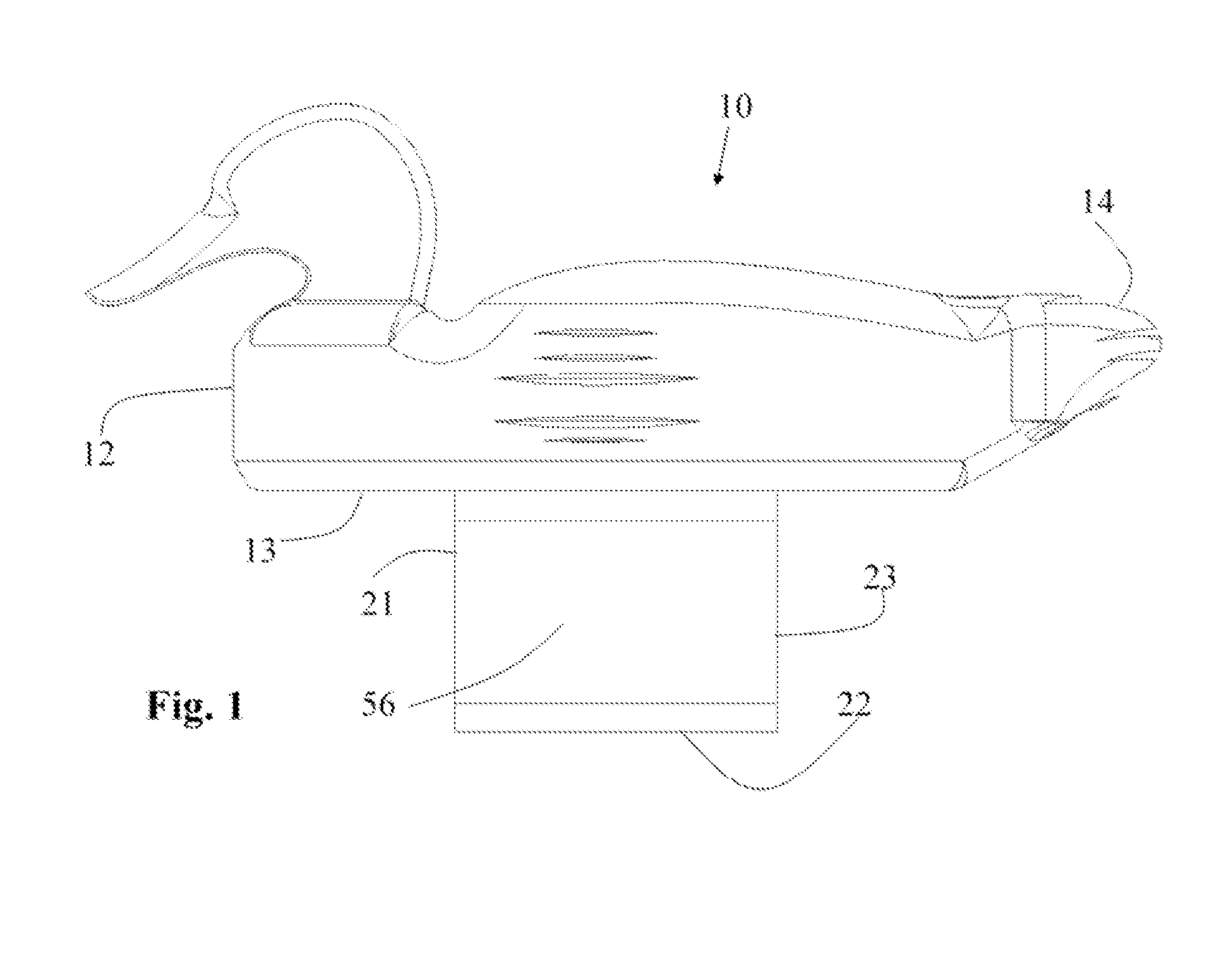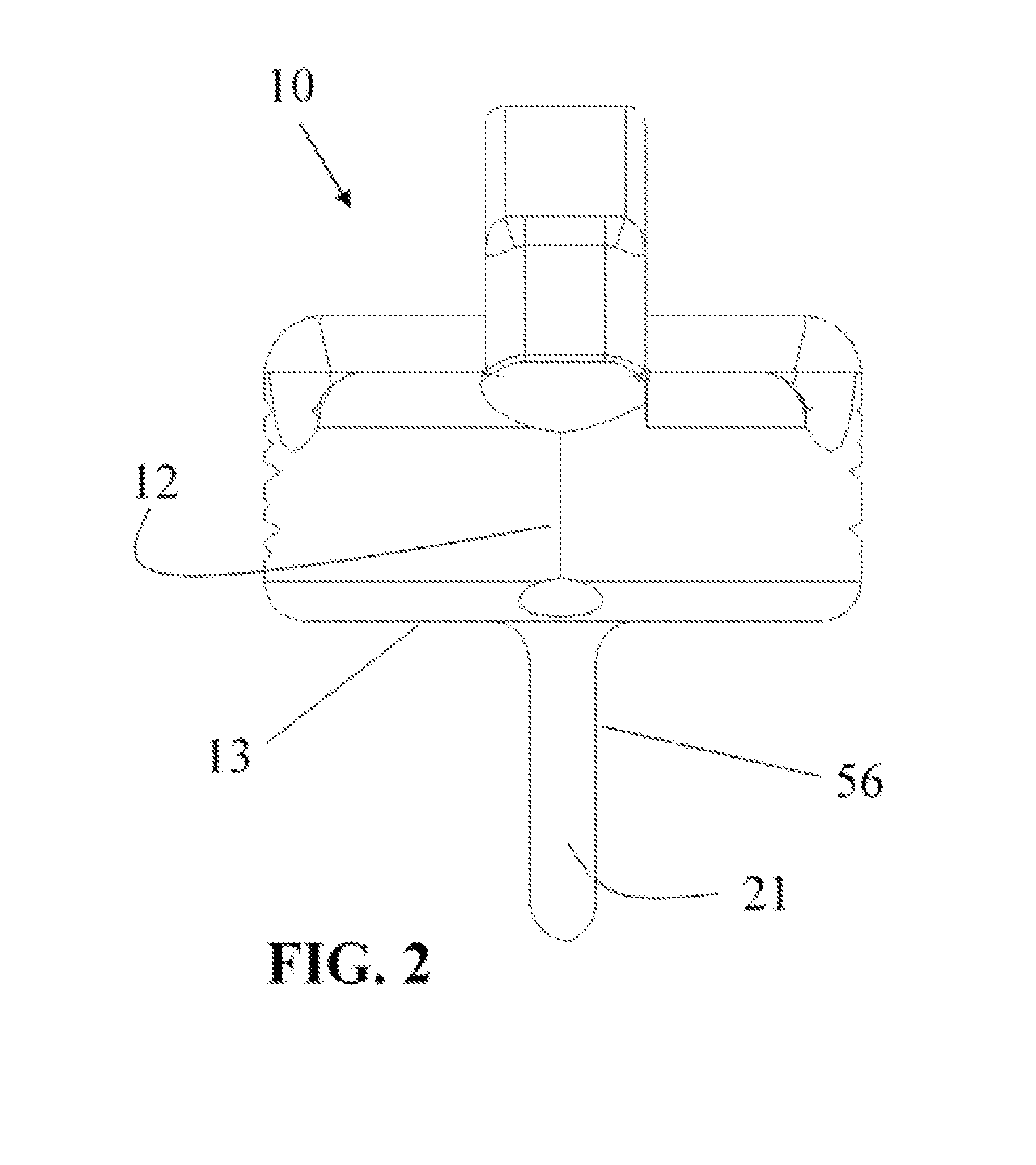Decoy keel for automatic motion
- Summary
- Abstract
- Description
- Claims
- Application Information
AI Technical Summary
Benefits of technology
Problems solved by technology
Method used
Image
Examples
Embodiment Construction
[0040]In the following detailed description, reference is made to the accompanying drawings that form a part hereof and in which are shown, by way of illustration, specific embodiments. In the drawings, like numerals describe substantially similar components throughout the several views. Other embodiments may be utilized and structural or logical, changes may be made without departing from the scope of the present disclosure. The following detailed description is, therefore, not to be taken in a limiting sense.
[0041]Referring to the drawings, and initially to FIG. 1, a waterfowl decoy 10 in accordance with the present invention comprises a body having a chest or forward facing region 12, a tail or rearward facing region 14, a ventral surface or downward facing region 13, a keel 56 affixed to said ventral surface or downward facing region 13, said keel having a leading edge 21, a trailing edge 23, and a connecting edge 22. In a preferred embodiment, the leading edge 21 of the keel is...
PUM
 Login to View More
Login to View More Abstract
Description
Claims
Application Information
 Login to View More
Login to View More - R&D
- Intellectual Property
- Life Sciences
- Materials
- Tech Scout
- Unparalleled Data Quality
- Higher Quality Content
- 60% Fewer Hallucinations
Browse by: Latest US Patents, China's latest patents, Technical Efficacy Thesaurus, Application Domain, Technology Topic, Popular Technical Reports.
© 2025 PatSnap. All rights reserved.Legal|Privacy policy|Modern Slavery Act Transparency Statement|Sitemap|About US| Contact US: help@patsnap.com



